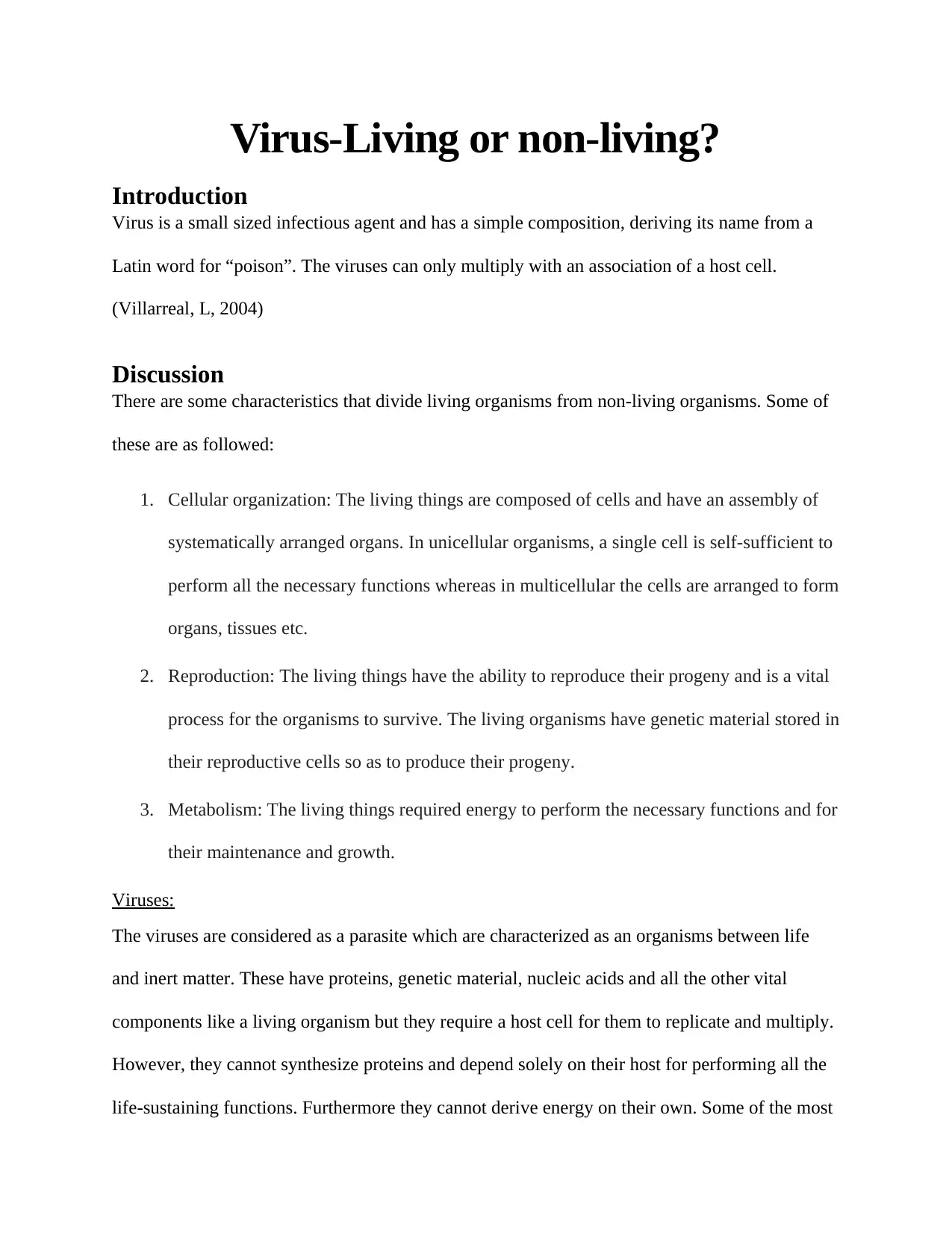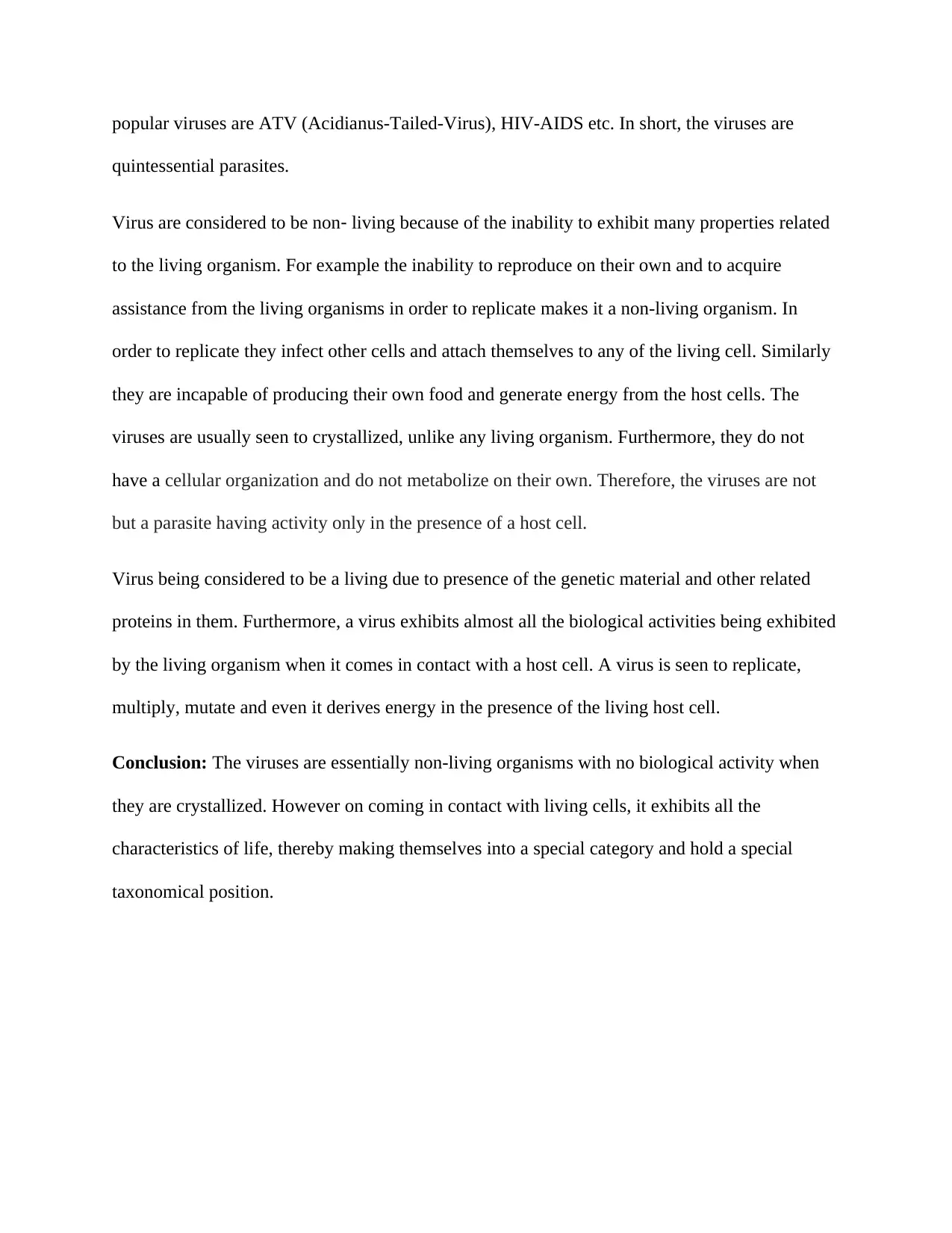University Biology Report: Is a Virus Living or Non-Living?
VerifiedAdded on 2019/09/21
|3
|585
|315
Report
AI Summary
This report delves into the debate of whether viruses are living or non-living entities. It begins by outlining the key characteristics of living organisms, such as cellular organization, reproduction, and metabolism. The report then examines the properties of viruses, including their structure, genetic material, and reliance on host cells for replication. It discusses the arguments for classifying viruses as non-living, such as their inability to reproduce independently and their lack of cellular structure and metabolism. The report also considers the arguments for classifying viruses as living, highlighting their ability to replicate, mutate, and derive energy within a host cell. Ultimately, the report concludes that viruses occupy a unique position, exhibiting characteristics of both living and non-living organisms, and highlights their importance in the biological world.
1 out of 3










![[object Object]](/_next/static/media/star-bottom.7253800d.svg)